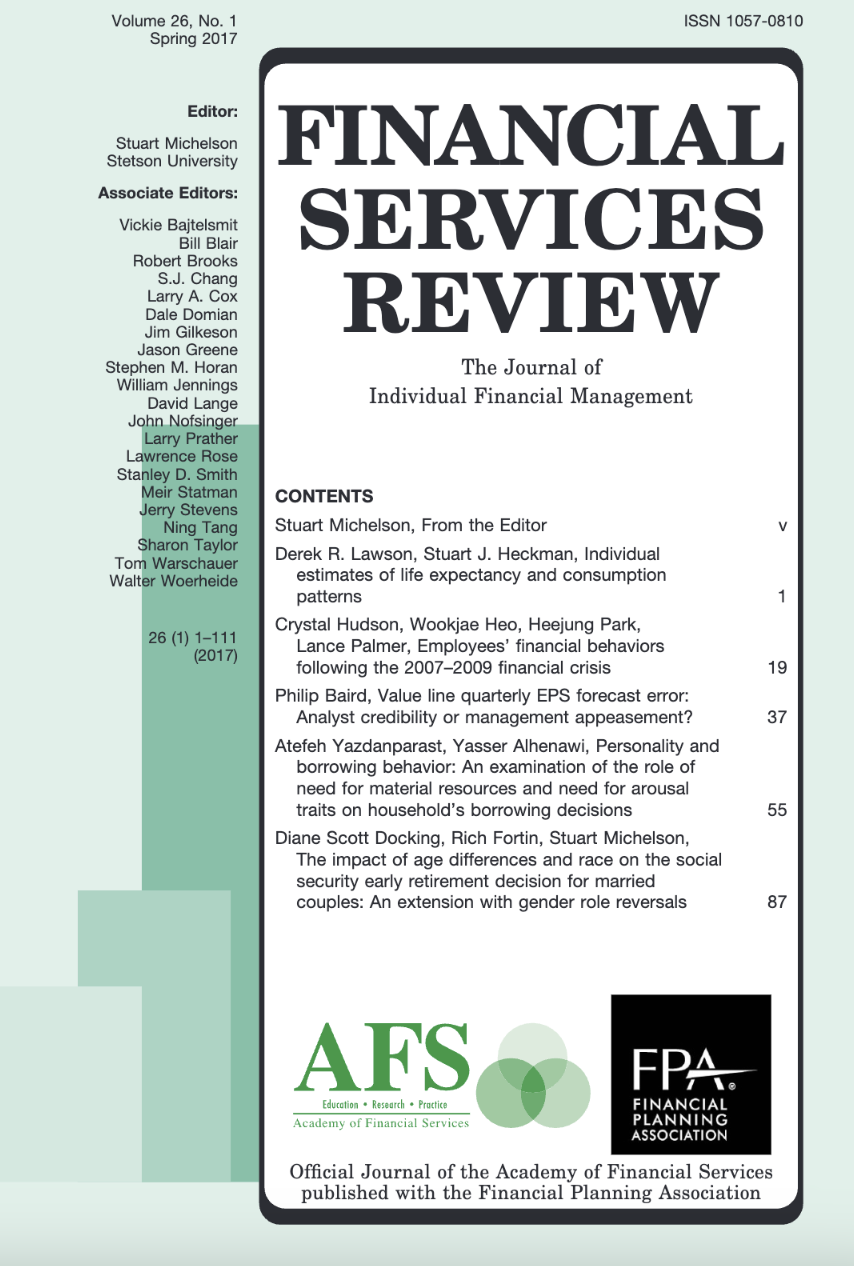Individual estimates of life expectancy and consumption patterns
DOI:
https://doi.org/10.61190/fsr.v26i1.3293Keywords:
Consumption, Life expectancy, Retirement, SavingAbstract
Previous research reveals a paucity of retirement preparedness in the United States. With the shift to defined contribution plans, retirement planning now falls on the shoulders of consumers. Using the 2013 Survey of Consumer Finances (SCF), the relationship between subjective life expectancy and consumption is investigated. Specifically, regression analyses examine the relationship between subjective life expectancy and three indicators of consumption: financial assets, credit card debt, and saving behavior. A secondary analysis separated respondents near retirement (i.e., within 10 years) and far from retirement (i.e., more than 10 years) to determine if retirement saliency affects the relationship between life expectancy and consumption. The influence of life expectancy on consump- tion is analyzed by separating life expectancy into two periods: remaining work life and retirement life. Results indicate that remaining work life expectancy and retirement life expectancy are associated with financial assets and that retirement life expectancy is associated with savings behavior.
Downloads
Published
How to Cite
Issue
Section
License
Copyright (c) 2014 Academy of Financial Services

This work is licensed under a Creative Commons Attribution-NonCommercial 4.0 International License.
Author(s) retain copyright and grant the Journal right of first publication with the work simultaneously licensed under a Creative Commons Attribution-NonCommercial 4.0 International License that allows to share the work with an acknowledgment of the work's authorship and initial publication in this Journal.
This license allows the author to remix, tweak, and build upon the original work non-commercially. The new work(s) must be non-commercial and acknowledge the original work.


